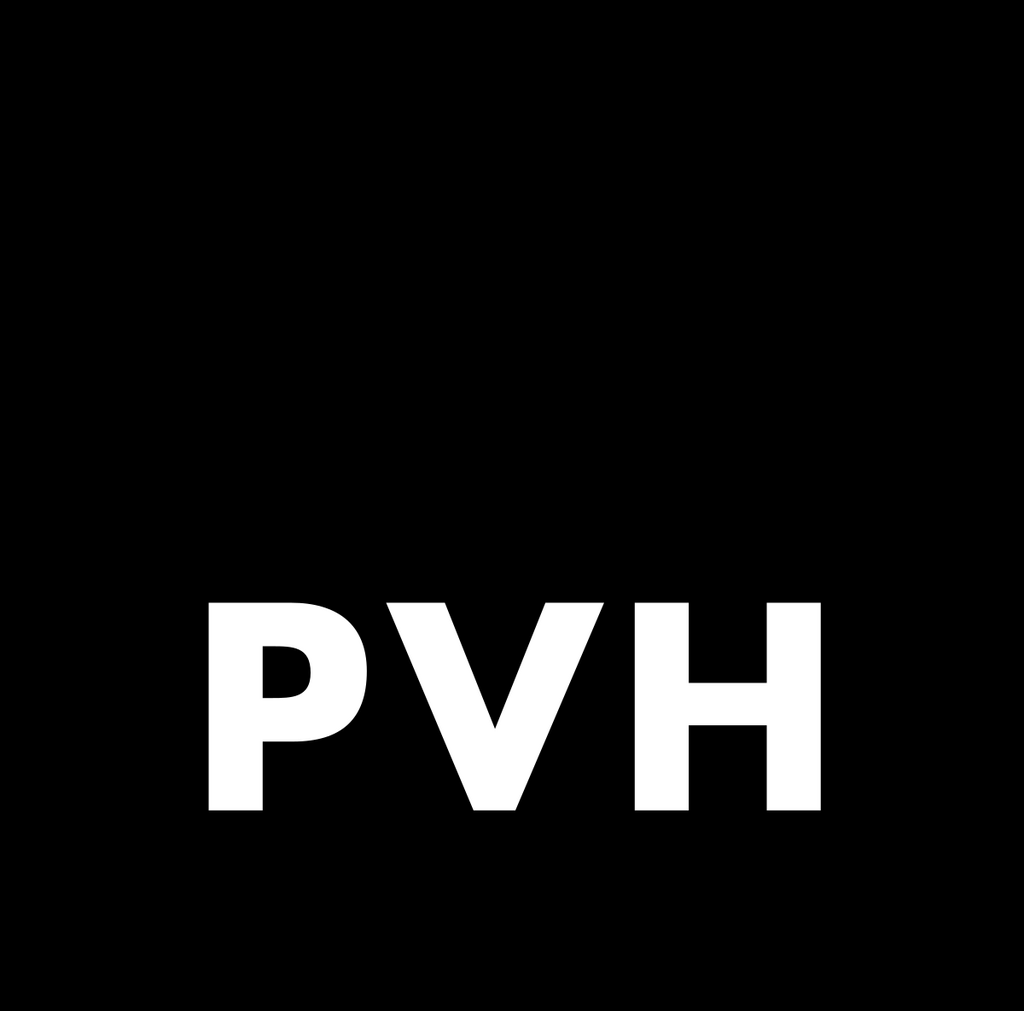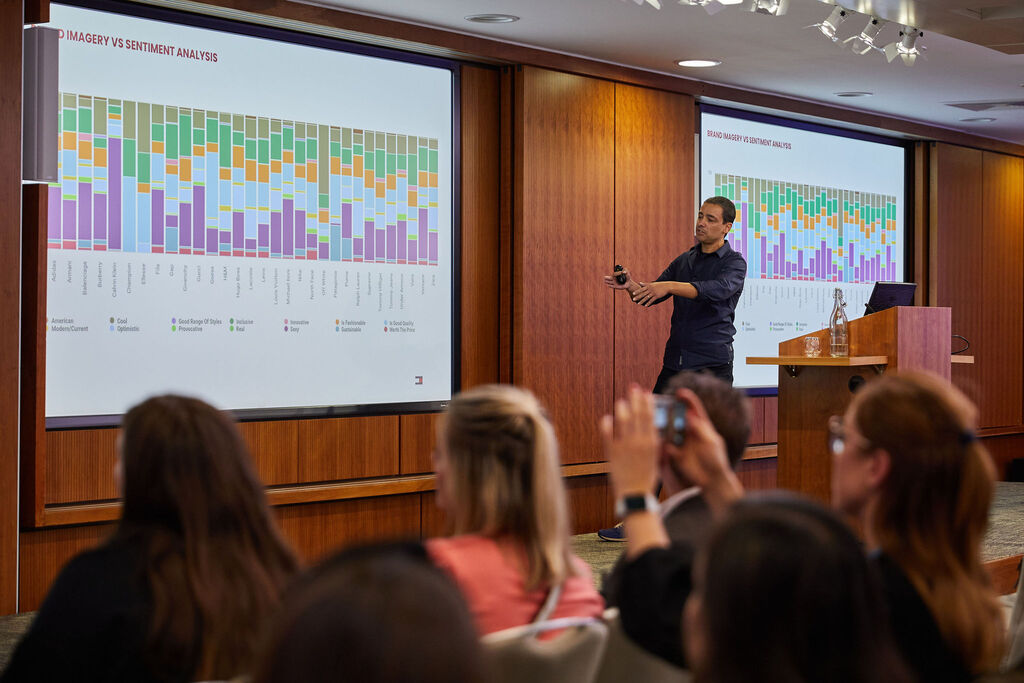CASE STUDY
PVH
Hear how PVH made social intelligence a centerpiece of their consumer insights
Book a meetingAbout PVH
PVH Corporate, owners of brands like Calvin Klein and Tommy Hilfiger, uses Brandwatch to form a fuller picture of who their consumers are, what they need, and how this affects organizational strategy.
In this case study, we hear from Rodrigo Milanez, Director of Global Consumer Insights, to understand how their team uses social listening to:
- Track popular hashtags, like #OOTD, to understand the share of voice and product trends.
- Inform the creation of an emotions calendar to help the entire organization understand changes in consumer moods and needs.
- Empower teams to react quicker and more effectively to social trends and customer support.

How to make social intelligence central to consumer insights
PVH’s consumer insights team conducts regular research to look at brand and competitor performance across social channels – while also looking across industries and markets.
“We're searching for the human truths out there. We want to discover what's driving human behavior and whether it's in the context of shopping, living, or working.”
The team at PVH approaches every single insights project with a mix of creativity, detective work, and textbook research. This gives them the freedom to ask any questions, no matter how crazy or obvious it may sound at first. There’s a constant reminder for the team to think outside the box.
The team paired this innovative thinking with Brandwatch’s suite of tools to begin extracting consumer insights via hashtags. They explored industry hashtags to determine what was of the most interest to their customers, ultimately informing key business strategies. Within these hashtags, they could also identify the company’s share of voice and understand the segments where their brand performed best. All this helps them understand their audiences better too.
One of the team’s most creative examples? They created a string of queries aimed at the popular hashtag #OOTD – or outfit of the day – to better understand what Rodrigo fondly calls “share of social wardrobe.”
The PVH team asked themselves this: beyond brand awareness, brand consideration, and purchase intentions, what if you could actually measure which brands people were wearing? And so, the team began tracking the hashtag #OOTD.
“This is the closest you can get to actually going into their homes and taking pictures of their wardrobes. These are real consumers wearing apparel and brands that they love so much, they want to share it with the world.”
PVH is currently tracking more or less 30 brands every month in order to see how big a presence they have inside consumers' closets. The brand found four main immediate benefits of using such a hashtag for consumer research.
- It's incredibly high volume and extremely focused – with well over 1 million mentions per month using the hashtag #OOTD. People post what brands they wear, so there's no beating around the bush.
- Because of this extreme focus, it's really easy to remove spam, making data cleanup straightforward.
- You don't have to worry about sentiment analysis because these posts are all very neutral or positive in nature.
- You are able to plot mentions and sentiment over time and see how your sharer's wardrobe is evolving.
This exploration of the #OOTD hashtag as a means of research is an interesting use case. It showcases creativity and the depth of insights organizations can garner from social data with Brandwatch. These data points can help teams better reach their prospects, and can provide invaluable insight across departments.
Better packaging data to inform storytelling
When impactful data is siloed, it might as well not exist at all. A crucial step in the process of consumer insights is storytelling. When you present your information with the right context, the impact of your social listening efforts can spread further across the organization.
One way PVH Corporate does this is through a comprehensive emotional calendar. The insights team identified eight different chapters throughout the year and formed an emotional calendar. Take October and November as an example.
“It should tell you what this moment is about. What's driving those emotions?” asks Rodrigo. “So, it could be the cold and wetter weather, or the fact that they're far enough from the holidays to be able to see the light and get some rest. But also, they're trying to escape their routines every now and then by connecting with friends.”
Based on these findings, the team then considers potential brand responses based on the season. In this case, it’s comforting, protecting, purposeful moments, and so on. Internally, this drives efforts to help the entire PVH team better understand consumer behavior – but it can also drive strategy decisions across content, customer service, and beyond.
The insights team takes the data they get from social listening platforms and ask themselves the following questions:
- How do we translate all these emotions into business opportunities or into branding opportunities and products?
- Are any of these emotions driving specific purchase journeys?
- Are they generating more buzz on social media?
- Are there more conversations?
- Are there greater search interests for a particular product online?
Packaging this data and forming a narrative around these insights helps other teams understand the utility of social listening data and how it can affect business outcomes.
Cross-functional collaboration and information sharing
Once the narrative is selected, the team at PVH then tries to link that to their mission story. Once they have all these pieces together, they then can discuss this with their marketing and product teams to pick their brains, sanity check their findings, and shape how they’re going to move forward.
Together, as an organization, PVH can now see a fuller picture of their audiences. From the context of the time of year, to cultural events and even brand promotions, social data helps brands form a holistic understanding of how to interact with customers.
“When do something like this in a social listening platform, you are actually elevating brand engagements to a much higher level. You're moving from a commercial transaction to an emotion with which people can relate."
"Also, you stop talking to a consumer, and you start talking to a person. Your brand becomes an ally, and that's what consumers have been asking for since the pandemic.” explains Rodrigo.
This is where a more efficient research method can free up time to consider the storytelling aspect of data. These insights can help teams across the entire organization better understand customers and fuel success when presented in a larger narrative.
The competitive advantage of social listening platforms
The margin between good and great is as razor thin as ever. The difference between winning a customer and losing one can be a matter of better insights, leading to better outcomes.
When used creatively and sometimes even in conjunction with other data sources, social data can help you react faster. It can also provide you with a potential path towards the strategy that is right for your brand.
“In a dynamic, post-pandemic world where consumer behavior and brand loyalty is ever-changing, I think taking a bold first step as fast as possible can be the difference between a successful brand and just another indifferent brand to the eyes of consumers, regardless of the industry. Social intelligence is the compass that will guide you through the journey.”
